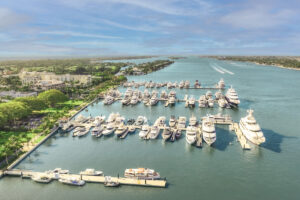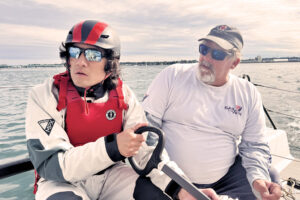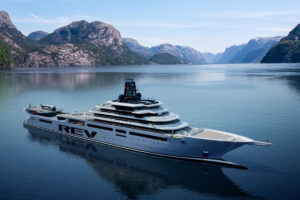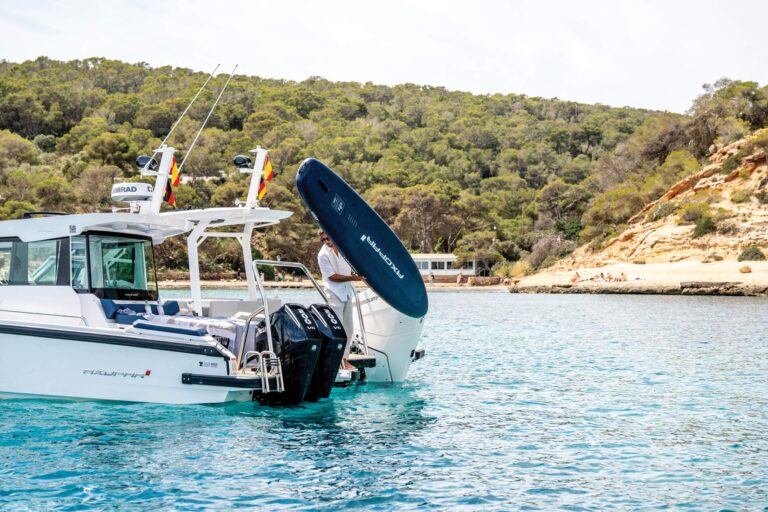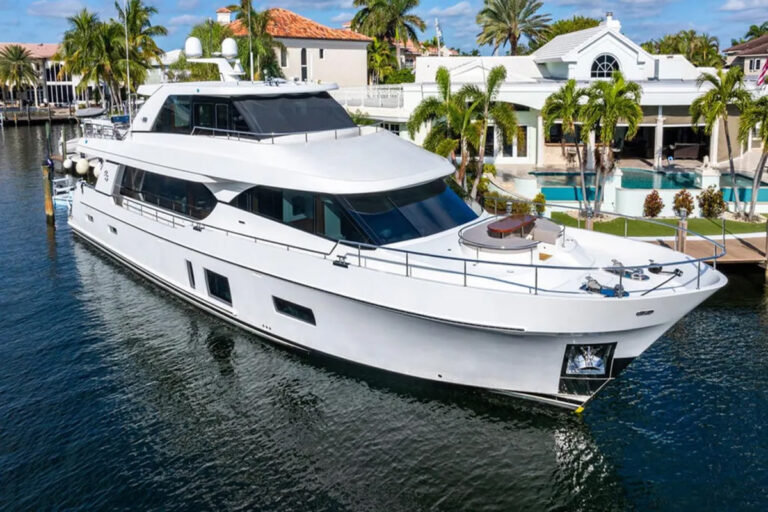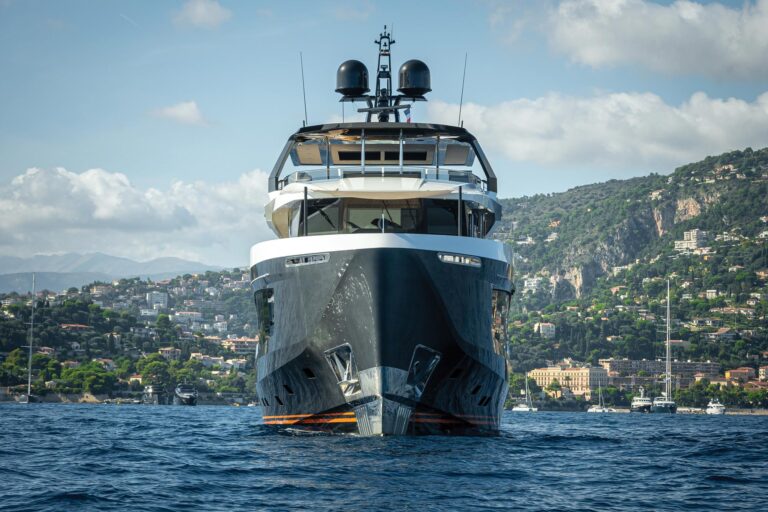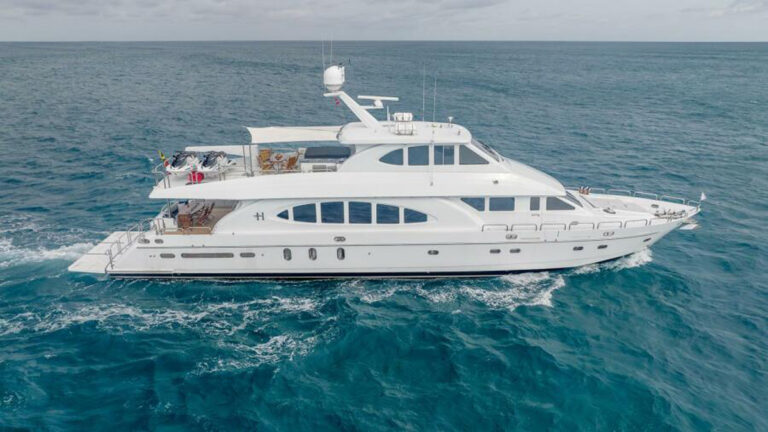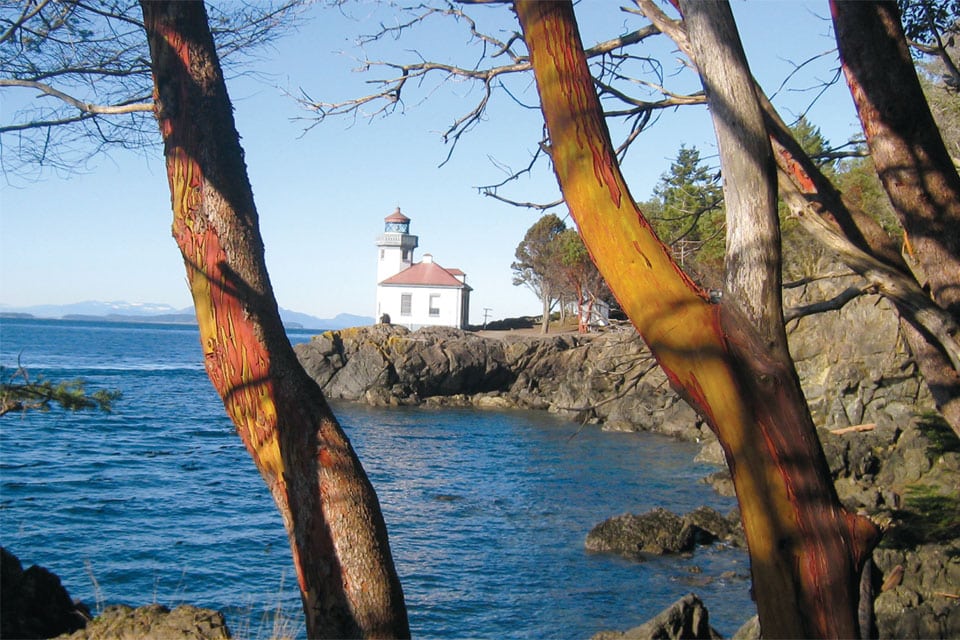
Friday Harbor
Just 60 miles north of Seattle lies some of the best cruising in the country. Hundreds of miles of protected waters encompass the Salish Sea and the San Juan Islands, still the premiere destination for Pacific Northwest yachtsmen. The archipelago includes four islands served by Washington State Ferries and 11 islands that are part of the state park system. If you have a boat, cruising here is still a great value.
The heart of the region is the city of Friday Harbor on San Juan Island. The Port of Friday Harbor Marina accommodates 500 boats and has 150 slips dedicated to transient boaters. Port Manager Tami Hayes will go out of her way to make your experience a good one. The port will let you tie up for a maximum of four hours free of charge while you provision, do laundry and chores, etc. King’s Market is only about three blocks from the marina, and you can arrange for a ride if your load is too large to carry. The port has a great laundry facility adjacent to the customs office — by far the cleanest I’ve ever seen. Boating services abound: Friday Harbor Marine Center (at the docks), Kings Marine, Jensen & Sons Boatyard and Marina and West Marine (360-378-1086) are all easy to access.
Friday Harbor is a walker’s dream, and there are plenty of things to do: two grocery stores, a pharmacy, the Whale Museum, whale-watching excursions, bike and kayak rentals and lots of fun shopping. Don’t miss the local farmer’s market on Saturdays from 10 a.m. to 1 p.m. in the courthouse parking lot for local crafts, freshly baked goods, vegetables, cheese and seafood. There are lots of options when it comes to dining. My personal favorites that are not to be missed include: Cask and Schooner Public House, Downriggers, Rocky Bay Cafe (360-378-5051), San Juan Ice Cream Co., the Backdoor Kitchen, the Bean Cafe and the Doctor’s Office Cafe. Come casual because the uniform du jour is usually fleece and jeans.
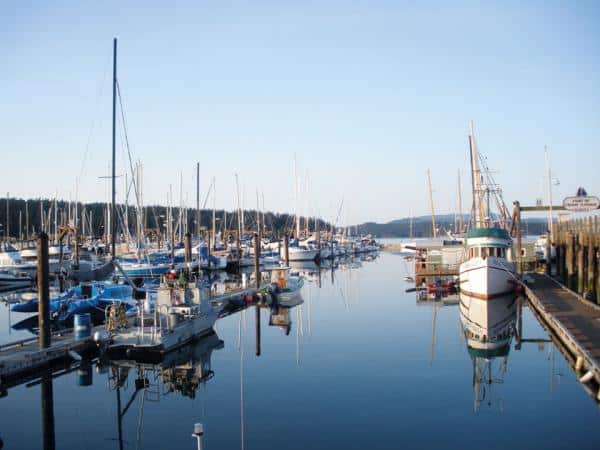
Boating enthusiasts will never tire of walking Friday Harbor’s town docks. Cool boats abound. Photo: Trish Rodriguez
San Juan Island is home to Pelindaba Lavender, a premier grower of lavender plants and seller of handcrafted lavender products. One of its products is Hydrosol, a virtually universal cleaner that I use on everything, from my iPad screen to the engine, from the galley to the head. This product is remarkable, as well as being 100 percent natural. I know folks that swear by it as an insect repellent. Be sure to stop by Pelindaba’s shop on First Street.
Friday Harbor is still a working port. You’ll find barges moving goods through the islands, commercial and native fishermen, towing operators and various-size passenger vessels. It is important to know that most commercial traffic does not monitor Channel 16 since it is not required to when participating in VTS — Vessel Traffic Service. You can reach it on Channel 13 (bridge to bridge) or Channel 5A (VTS). Give them a call; the pros will appreciate knowing your intentions and not having to second-guess what might happen. The Washington State Ferries that ply the islands comprise the largest ferry fleet in the country.
As the adage goes, it all comes down to location, location, location. Eight other marinas are within 10 miles of Friday Harbor. Washington marine state parks abound; eight parks are also within 10 miles. My favorites are Jones Island, Reid Harbor at Stuart Island and Fossil Bay at Sucia Island. Take the route less traveled, where there are plenty of anchoring options that are not frequented by charter boats and the masses. Looking to get away from the traditional marinas and state parks, locals often seek refuge in Indian Cove, McKay Harbor and Parks Bay. A few years ago I directed some friends to Indian Cove on the Fourth of July, and they were the only ones there. Just a caveat: Most of the land surrounding these anchorages is private, so be respectful, and although most texts insist that you have a scope of 7:1, you’ll find that folks in the Northwest typically shorten to between 3:1 and 4:1 once the hook is set.
One of the wonders of cruising in the Salish Sea is the chance of coming upon Southern Resident killer whales. Orcas are an icon of Washington’s marine world, but they are classified as an endangered species by the U.S. and Canadian federal governments and by Washington state. The February 2010 population of 89 whales remains well below the 98 whales recorded in 1995. Among the threats to the well-being of the orcas are the declining population of salmon (especially chinook salmon), exposure to toxic pollutants, and vessel noise and presence. Because of this, the regulations state that you stay at least 200 yards from these animals and do not impede their paths. They are notoriously curious and may come close to take a look at you, so be aware. Minke and gray whales are also known to frequent the area, and porpoises and seals are abundant. Watch the trees for bald eagles, and you might even glimpse a mountain goat or antelope on the bare face of Spieden Island, a vestige of its past history as a game preserve.
If you decide to take advantage of this cruising wonderland, here are a few hints to reduce your chances of meeting a towing operator on the water. Remember that tides and currents are especially important factors when cruising this area. The normal tidal range is nine to 10 feet, and local currents average about 5 knots and in a few passes pick up to 12 knots. August (or Fogust as the locals say) brings advection fog. While you might be tempted to believe the fog will burn off sometime around noon, that isn’t the case. Advection fog occurs when moist air passes over a cool surface by advection (wind) and is cooled. It is common when a warm front passes over cooler water, as is the case in the San Juans, so be prepared to navigate in the fog. Pay particular attention to the weather and the state of the tide. Happy cruising.
Richard Rodriguez is a U.S. Coast Guard licensed Master. He has worked in the San Juan Islands for nine seasons as a commercial-assistance towing operator and has responded to more than 1,200 vessels in distress. During the off-season Rodriguez is the director of operations for Zenith Maritime.

